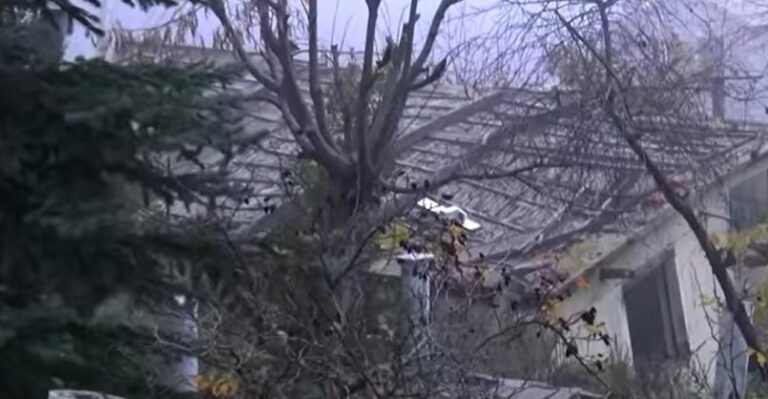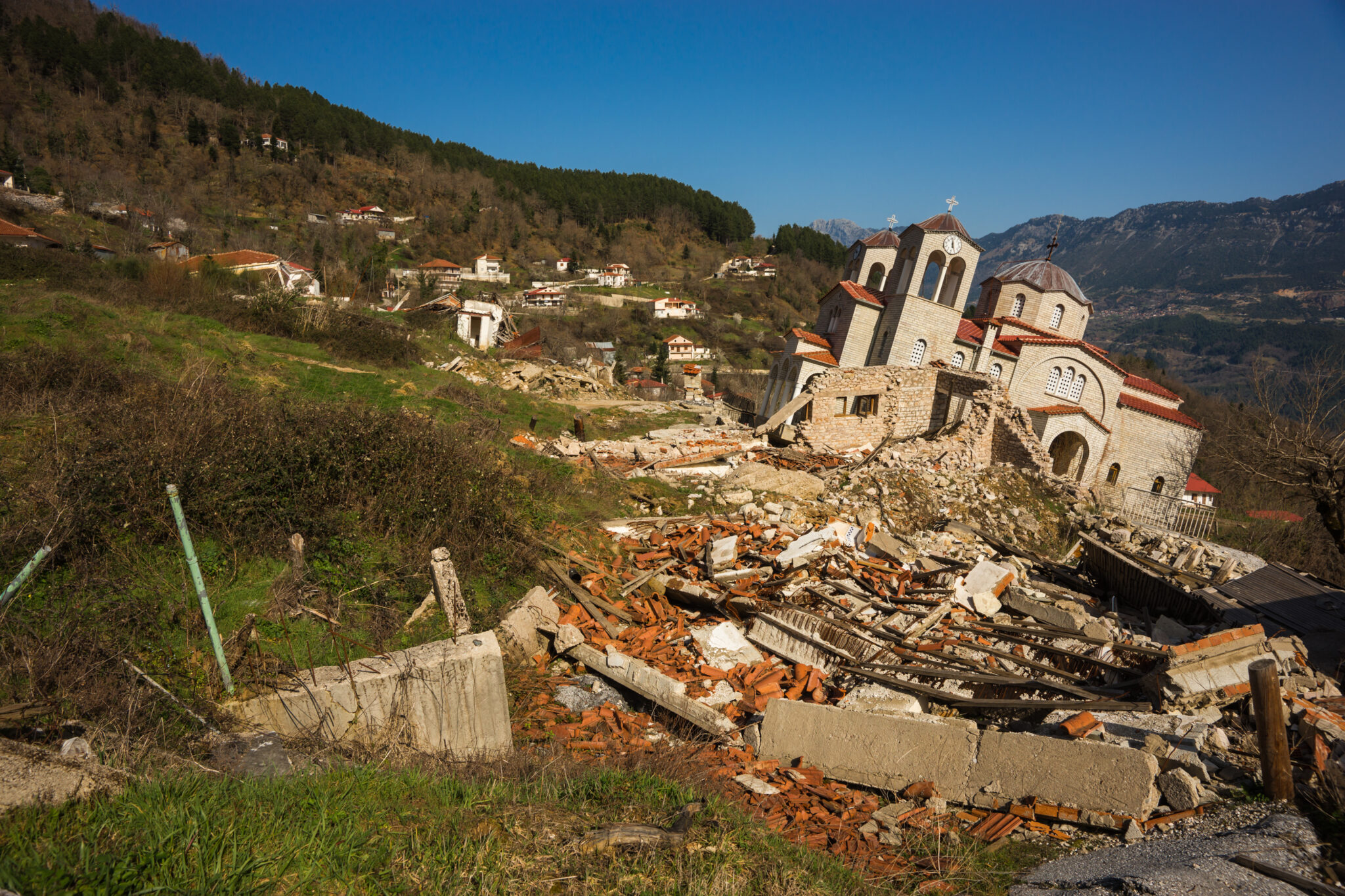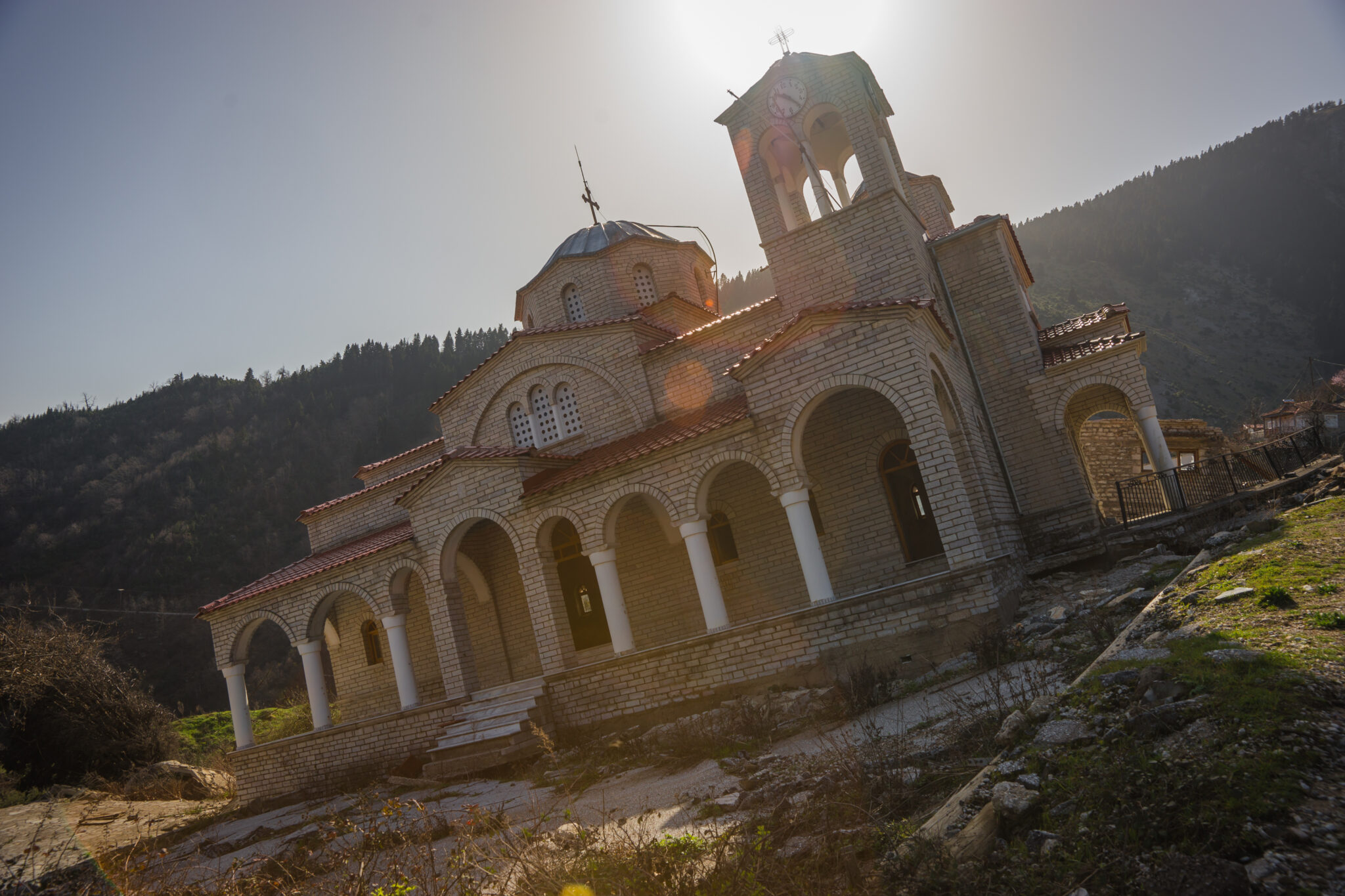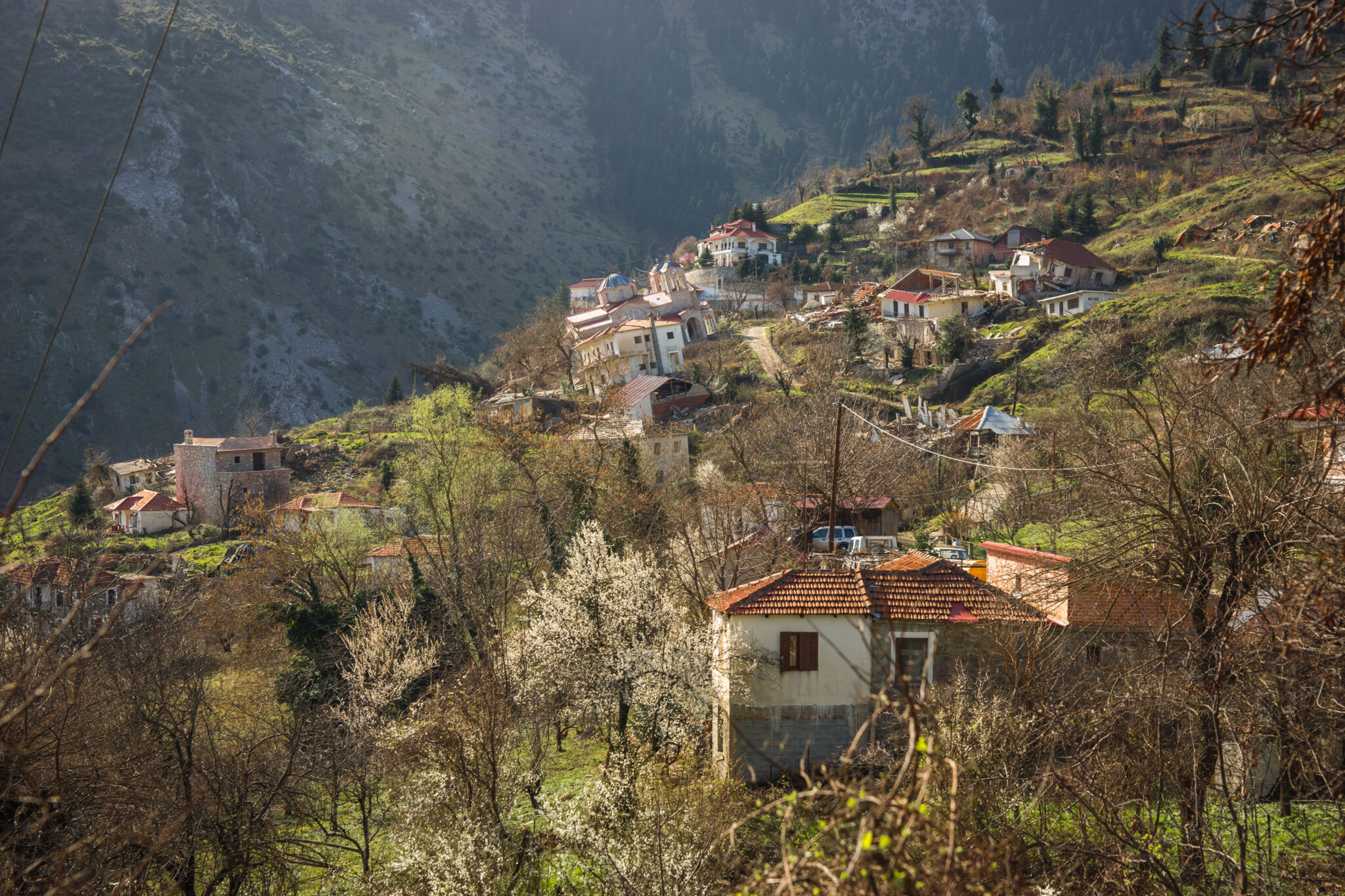Ropoto is a small village in Trikala, Thessaly, on the slopes of Mt. Karavoula. When it was first built it was at an altitude of 750m, but today the whole village is at least 40m lower as a result of the many landslides that have afflicted the area for the past 60 years.
One of the most destructive landslides occurred on April 12, 2012, when the few houses that remained standing slid, almost intact, a few metres down the slope. The rest had already been cut in half or were completely destroyed.
Ropoto, almost deserted now, is still there precariously hanging on to the slope.
The leaning church of Panagia Theotokos is the landmark of a village that used to be home to around 800 residents. The church is large and still imposing and its curious setting as it lists on the mountain side makes it an unusual and impressive sight.
The disaster made the village uninhabitable, and as the landslides showed no signs of remission, most residents had to abandon the village.
The few people who decided to remain live in shacks and huts that they have built themselves. The government’s seeming indifference towards their village and its continuing sinking is the cause of much pain and frustration.
It is indeed a horrifying sight; buildings and roads have been cut in half, and the foundations of houses have been irrevocably damaged. Most residents managed to save only a few of their belongings from the half-demolished houses, while those who remained have cleared the ruins around the church.
“Greece’s sinking ghost-town”
The story of the village that not long ago had four traditional distilleries and a watermill became wider known in 2016, when the remaining residents found out that the village was not among those who would benefit from ENFIA (property tax) exemption or reduction, something that caused strong reactions. In the end, their demands were heard and that same year a documentary came out titled “Greece’s sinking ghost-town”. The film attracted the attention of the international media, who grasped upon the human pain the landslides caused. For example, one of the residents, the former president of the community, had used his life savings from the many years he had worked as an immigrant in Germany to build his house. This house, like so many others, no longer exists, as “I was building without knowing on what and where I’m building.”

According to the old residents of the area, the first landslides occurred in the 1960s, but the necessary protective infrastructure works were never made. Despite the warning signs, during the 1980s building permissions were still being granted without taking into account the landslides. The subsidence also destroyed what used to be Ropoto’s main product and income; the hundreds of apple trees in orchards surrounding the village.
Read also:
Past and Present: Eating in Karditsa, Thessaly
Volos: Best places for food and coffee









